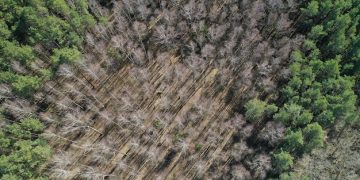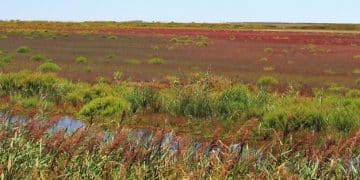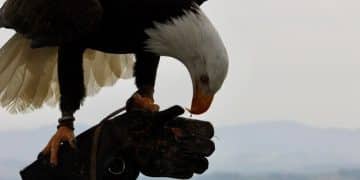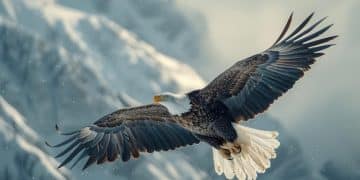Responsible Wildlife Viewing & Photography: Best Practices
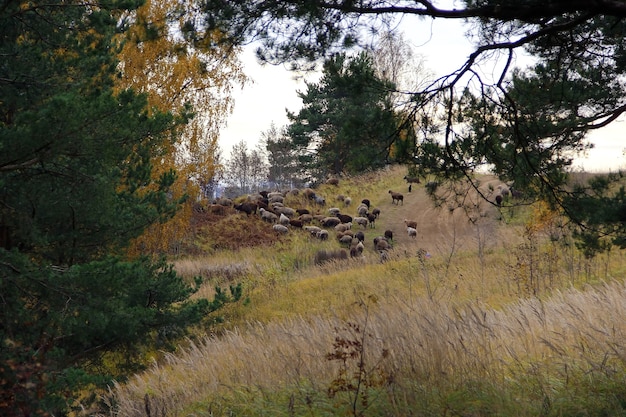
Responsible wildlife viewing and photography involve minimizing disturbance to animals and their habitats, respecting their space, and prioritizing their well-being over getting the perfect shot.
Are you passionate about wildlife and eager to capture stunning photos or simply observe animals in their natural habitat? Learning and adhering to what are the best practices for responsible wildlife viewing and photography? is crucial for minimizing disturbance, respecting their space, and ensuring their long-term well-being.
Understanding Wildlife’s Sensitivity
When venturing into the wild, remember that you are entering the home of these animals. Their survival depends on their ability to find food, reproduce, and avoid danger. Your actions can significantly impact their behavior and well-being, so respect is key.
Here are some factors to consider when understanding wildlife sensitivity:
Respecting Natural Behaviors
Wildlife behaves in certain ways for survival. Avoid actions that might disrupt these essential behaviors.
Minimizing Stress
Stress can weaken an animal’s immune system, making it more susceptible to disease or affecting their ability to care for their young.
- Avoid approaching animals too closely: Use binoculars or a telephoto lens to observe from a distance.
- Never feed wild animals: Feeding can alter their natural foraging behaviors and make them dependent on humans.
- Keep noise levels down: Loud noises can startle or stress animals, especially during breeding season.
Understanding and respecting wildlife’s sensitivity is fundamental for ensuring that your interactions are positive and do not negatively affect their lives.
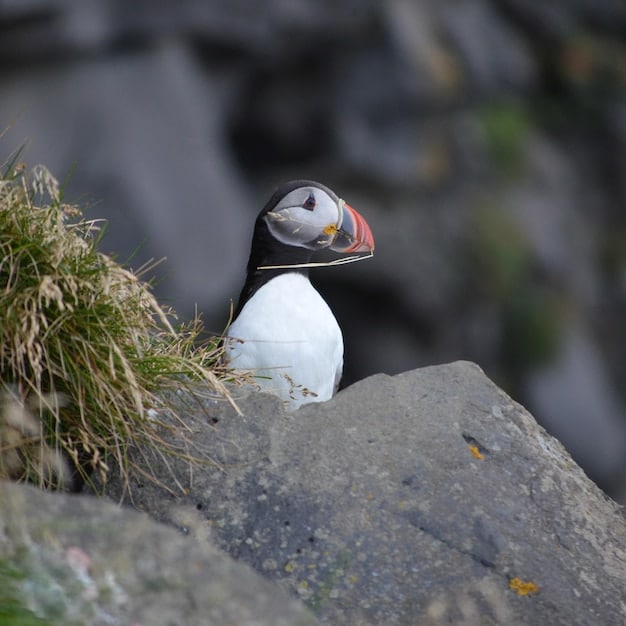
Approaching Animals with Respect
How you approach wildlife can significantly influence their reaction. A respectful approach ensures minimal disturbance and allows you to observe them in a natural state.
Approaching animals with respect includes:
Maintaining a Safe Distance
A safe distance varies depending on the species and the environment. Always err on the side of caution.
Using Binoculars and Telephoto Lenses
These tools allow you to get a closer look without physically approaching the animal.
Moving Slowly and Predictably
Sudden movements can startle animals. Approach slowly and make your intentions clear.
- Avoid direct eye contact: Direct eye contact can be perceived as a threat by some animals.
- Be mindful of your scent: If possible, approach animals from downwind to minimize your scent.
- Never chase or pursue animals: Chasing can cause extreme stress and potential harm.
By approaching animals with respect, you contribute to their well-being and create a more rewarding experience for yourself and others.
Ethical Photography Practices
Photography is a powerful tool for capturing the beauty of wildlife, but it’s essential to practice ethical photography to avoid causing harm. Responsible photography prioritizes the well-being of the animals over getting the perfect shot.
Here are some key ethical photography practices:
Avoiding Baiting and Luring
Baiting and luring animals can alter their natural behaviors and create dependency on humans.
Not Altering Habitats
Moving branches or disturbing nests for a better shot can disrupt the ecosystem and stress animals.
Respecting Nesting Season
Nesting season is a vulnerable time for many species. Avoid approaching nesting sites to prevent disturbance.
Ethical wildlife photographers also adhere to these guidelines:
- Using natural light: Avoid using flash photography, especially with nocturnal animals, as it can disorient them.
- Photographing from a distance: Use long lenses to photograph animals from a safe distance, minimizing disturbance.
- Being honest about your methods: Disclose if you used any techniques that could be perceived as unethical.
By following ethical photography practices, you can capture amazing images while ensuring the welfare of the animals you photograph.
Minimizing Environmental Impact
Responsible wildlife viewing and photography also involve minimizing your impact on the environment. Even seemingly small actions can have cumulative effects on the ecosystem.
Minimizing environmental impacts includes:
Staying on Marked Trails
Sticking to trails reduces the risk of trampling vegetation or disturbing wildlife habitats.
Packing Out All Trash
Leaving no trace of your visit is crucial. Pack out everything you pack in, including food wrappers and other waste.
Avoiding Fragile Areas
Stay away from sensitive habitats like wetlands or breeding grounds.
Additionally, consider these points:
- Using environmentally friendly products: When possible, use biodegradable soaps and detergents.
- Supporting conservation efforts: Donate to local conservation organizations or participate in volunteer activities.
- Respecting local regulations: Adhere to any rules or guidelines established by park authorities.
By minimizing your environmental impact, you help preserve the natural beauty and integrity of wildlife habitats for future generations.
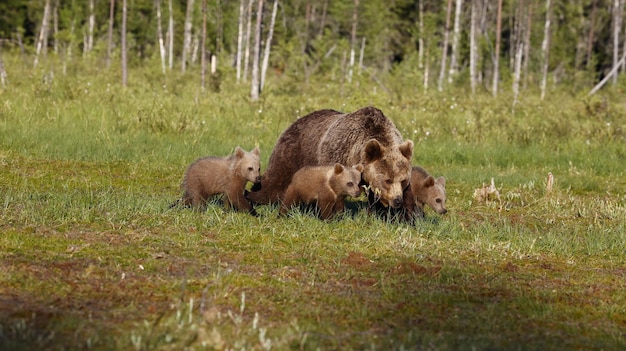
Educating Others and Promoting Conservation
One of the most impactful things you can do as a responsible wildlife enthusiast is to educate others and promote conservation efforts. Sharing your knowledge and passion can inspire others to adopt ethical practices.
Educating others and promoting conservation can involve:
Sharing Your Experiences Responsibly
When sharing photos or stories, emphasize the importance of responsible wildlife viewing and photography.
Supporting Conservation Organizations
Donate to or volunteer with groups dedicated to protecting wildlife and their habitats.
Leading by Example
Demonstrate ethical practices in your own interactions with wildlife, inspiring others to follow suit.
Consider these additional ways to make a difference:
- Participating in citizen science projects: Contribute to research efforts by collecting data or reporting sightings.
- Advocating for wildlife protection: Support policies that protect wildlife habitats and reduce human-wildlife conflict.
- Teaching children about wildlife: Instill a love and respect for nature in the next generation.
By educating others and promoting conservation, you play a vital role in safeguarding the future of wildlife.
Understanding Local Regulations and Guidelines
Local regulations and guidelines are in place to protect wildlife and their habitats. These rules vary by location and species, so it’s essential to be informed before venturing out.
Understanding local regulations and guidelines involves:
Researching Before You Go
Check with local park authorities or wildlife agencies to understand the specific rules and guidelines for the area you plan to visit.
Obtaining Necessary Permits
Some areas require permits for photography or wildlife viewing, especially in protected areas.
Respecting Closures and Restrictions
Pay attention to any closures or restrictions that are in place to protect sensitive habitats or breeding grounds.
Also remember to:
- Understand hunting and fishing regulations: Be aware of any restrictions on hunting or fishing in the area.
- Report any violations: If you witness any illegal activity, report it to the appropriate authorities.
- Stay informed: Keep up-to-date with any changes in regulations or guidelines.
By understanding and adhering to local regulations and guidelines, you ensure that your activities are sustainable and contribute to the protection of wildlife.
| Key Point | Brief Description |
|---|---|
| 🐾 Respect Wildlife | Maintain distance and avoid disrupting natural behaviors. |
| 📸 Ethical Photography | Avoid baiting, respect nesting seasons, and use natural light. |
| 🗑️ Minimize Impact | Stay on trails, pack out all trash, and avoid fragile areas. |
| 📚 Educate Others | Share experiences responsibly and support conservation efforts. |
FAQ Section
▼
Maintaining a safe distance minimizes stress on the animals, which can disrupt their natural behaviors and affect their ability to survive and reproduce. It also protects you from potential injury.
▼
If an animal approaches you, remain calm, avoid direct eye contact, and slowly back away. Do not run or make sudden movements, as this may provoke the animal.
▼
No, it is never okay to feed wild animals. Feeding them can alter their natural foraging behaviors, make them dependent on humans, and increase the risk of disease transmission.
▼
Minimize your impact by staying on marked trails, packing out all trash, avoiding fragile areas, and using environmentally friendly products. Support conservation efforts to further reduce your footprint.
▼
Ethical wildlife photography involves avoiding baiting, not altering habitats for better shots, respecting nesting season, using natural light, and being transparent about your methods to ensure animal welfare.
Conclusion
By embracing these best practices for responsible wildlife viewing and photography, you contribute to the conservation of wildlife and their habitats. Your actions can make a significant difference in ensuring that future generations can enjoy the wonders of the natural world.

